


Global Range Aircraft
The notional Global Range Aircraft is based on the USAF Science
Advisory Board (SAB) "New World Vistas" global range mission of 150,000 pounds payload over a 12,000 NM range. Aircraft technologies that could give much better performance include a large improvement in lift to drag (L/D) ratio of a wing coupled to evolutionary improvement in engines. This next generation airlifter with a high lift/drag wing/airframe design, engineered materials[5] , high temperature engine components, composite fabrication and fastening, and next generation material for airframe and skin. Worldwide coverage will require aircraft that can fly 12,000 miles, deliver cargo, and return without refueling at the terminal point. Air refueling is a logistics intensive operation, and airlifter refueling can be eliminated. Cargo capacity for airlifters of the 21st century should be 150,000 pounds. With improvements in aircraft and delivery methods, the gross takeoff weight will be 1,000,000 pounds.
The Blended-Wing-Body (BWB) design approach is to maximize overall efficiency by integrating the engines, wings, and the body into a single lifting surface. The BWB synergistically combines a rigid, wide airfoil-shaped fuselage with high-aspect-ratio wings and buried engines with a common integrated nacelle. The BWB concept houses a wide double-deck payload compartment that blends into the wing. Adjacent to this central section is ample room for baggage and cargo. Preliminary analyses indicate that the BWB would outperform all conventional aircraft. An initial evaluation of this configuration indicates significant cost and performance benefits over conventional configurations: a 56-percent increase in lift-drag ratio, a 20-percent decrease in fuel burn, and a 10-percent decrease in the operating-empty weight. The cargo aircraft, with a 280-foot wingspan, could carry 231,000 pounds of payload more than 7,000 nautical miles at a cruise speed of approximately 560 mph. This is almost twice the capacity of the Boeing 747-400. It would reduce fuel burn and harmful emissions per passenger mile by almost a third in comparison to today's aircraft. Other potential benefits of the BWB include increased aerodynamic performance, lower operating cost and reduced community noise levels.
The BWB design uses ten intermediate chord-wise (front-to-back) ribs to connect the upper and lower wing skins. These ribs separate the interior into ten bays. Advanced composite material will be required to minimize the amount of structure needed to withstand the pressurization loads and deflections in the skins. Today's aircraft fly at speeds approaching 600mph. At these speeds, the thick wing of the BWB would experience substantial aerodynamic drag without carefully designed control of the airflow over the wing. Current transport aircraft wings are relatively thin compared to the airfoils required for the BWB and do not experience this problem as severely.
Stability and control and ride quality are significant challenges to development of the BWB. Normally, all-wing configurations are difficult to stabilize without resorting to techniques that increase overall drag. The stability and control behavior of the Blended-Wing-Body resembles that of a jet fighter rather than a commercial transport. Advanced flight control systems will be required to control the aircraft at various flight conditions. This approach allows the center-of-gravity to be located further aft, which helps reduces drag for this type of design.
While the idea for "flying wing" airplanes is not new, no commercial transport of this type has ever been created. The issues of high speed aerodynamics, propulsion integration and noncircular pressurized cabins have yet to be addressed by today's aircraft designers. Many challenges exist that will involve complex solutions requiring a multidisciplinary design approach.
Team members studying the Blended-Wing-Body concept are McDonnell Douglas, Stanford University, the University of Southern California, Clark Atlanta University, the University of Florida, and NASA Langley and Lewis Research Centers.
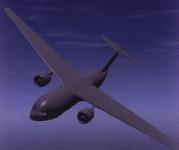
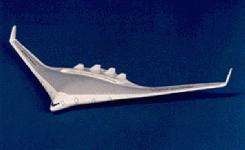
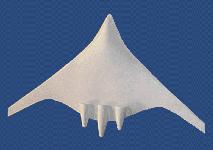
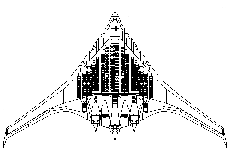
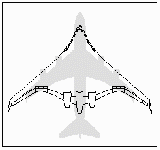
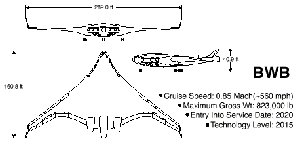
Sources and Resources
http://www.fas.org/man/dod-101/sys/ac/gra.htm
Maintained by Robert Sherman
Originally created by John Pike
Updated Tuesday, February 10, 1998 5:16:45 AM














